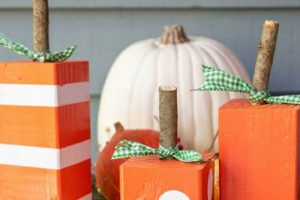The process of applying color to wood surfaces, combined with a do-it-yourself approach, encompasses a range of techniques for altering the appearance of wooden materials. This activity typically involves selecting a coloring agent, preparing the wood surface, and applying the agent to achieve a desired aesthetic effect. For example, an individual might choose a water-based product to enhance the grain of a pine table, undertaking the project independently without professional assistance.
Undertaking such projects independently offers several advantages, including cost savings and personalized customization. Historically, altering the color of wood was primarily functional, serving to protect against the elements. Over time, it evolved into an artistic endeavor, enabling individuals to express creativity and match wooden objects to specific interior design themes. The ability to control the entire process allows for unique outcomes tailored to individual preferences, fostering a sense of accomplishment and ownership.
Understanding the nuances of wood preparation, colorant selection, and application techniques is essential for successful results. The following sections will detail crucial aspects of the process, including sanding techniques, choosing the appropriate type of colorant, and applying sealant coats to protect the newly colored surface.
Essential Considerations for Wood Coloring Projects
Achieving a professional finish requires attention to detail and adherence to best practices. The following tips provide guidance for successful wood coloring endeavors.
Tip 1: Surface Preparation is Paramount. Sand the wood thoroughly, progressing through progressively finer grits of sandpaper (e.g., 120, 180, 220), to create a smooth, uniform surface. Uneven surfaces will result in inconsistent color absorption.
Tip 2: Choose the Appropriate Coloring Agent. Different types of wood respond differently to various agents. Water-based colorants are generally easier to apply and clean up, while oil-based options offer greater durability and richer color. Test the product on a hidden area first.
Tip 3: Stir, Do Not Shake. Shaking can introduce air bubbles into the coloring agent, which can affect the application process. Stir gently and thoroughly to ensure even distribution of pigments.
Tip 4: Apply in Thin, Even Coats. Multiple thin coats are preferable to one thick coat, which can lead to uneven drying, drips, and a blotchy appearance. Allow each coat to dry completely before applying the next.
Tip 5: Utilize the Correct Application Method. Brushes, rags, and sprayers each offer different advantages. Brushes are suitable for detailed work, rags for creating a distressed look, and sprayers for achieving a uniform, professional finish on large surfaces. Select the tool based on the project’s requirements.
Tip 6: Always Work in a Well-Ventilated Area. Many wood coloring agents contain volatile organic compounds (VOCs) that can be harmful if inhaled. Ensure adequate ventilation to minimize exposure.
Tip 7: Consider a Wood Conditioner. Applying a wood conditioner before coloring can help to ensure even absorption, especially on softwoods like pine, which are prone to blotching.
Tip 8: Seal the Colored Surface. Once the desired color is achieved, apply a clear topcoat (e.g., polyurethane, varnish, lacquer) to protect the finish and enhance its durability. Follow the manufacturer’s instructions for application and drying times.
Adhering to these guidelines will contribute to a more consistent and aesthetically pleasing final product, enhancing the beauty and longevity of wooden projects.
The next section will address common mistakes to avoid during the wood coloring process.
1. Surface Preparation Method
The surface preparation method represents a critical determinant in the success or failure of any independent wood coloring project. Inadequate or improper preparation directly impacts the uniformity and adherence of the coloring agent, leading to aesthetically undesirable results. For instance, failure to adequately sand a wooden surface will result in uneven color absorption, with the coloring agent highlighting imperfections and scratches rather than enhancing the wood’s natural grain. Conversely, a meticulously sanded and cleaned surface provides an optimal substrate for even color distribution, yielding a professional-quality finish. The surface preparation method, therefore, functions as a foundational step upon which the integrity of the entire wood coloring project rests.
Different wood species and project types necessitate variations in surface preparation. Softwoods, such as pine, often require the application of a wood conditioner to mitigate blotching, a common issue caused by the wood’s porous nature. Hardwoods, like oak, may necessitate more aggressive sanding to remove existing finishes or imperfections. Similarly, preparing a raw wood surface differs significantly from refinishing a previously colored or sealed surface. The correct selection and execution of surface preparation techniques, therefore, are essential for optimizing the outcome of independently coloring wood.
Ultimately, the quality of the surface preparation directly correlates to the quality of the final finish. Ignoring or underestimating the importance of this initial phase introduces significant risk, undermining the overall effectiveness and longevity of the wood coloring project. Proper surface preparation is not merely a preliminary step, but an integral component that dictates the aesthetic appeal and durability of the colored wood.
2. Colorant Selection Criteria
Colorant selection represents a pivotal decision point in independently coloring wood. The choice of colorant directly impacts the final aesthetic, the wood’s protection level, and the overall longevity of the project. Selecting a colorant without careful consideration can lead to undesirable outcomes, such as poor color matching, inadequate wood protection, or premature finish degradation. For example, using an interior-grade colorant on an exterior project will likely result in rapid fading and deterioration due to exposure to ultraviolet radiation and moisture. Conversely, selecting a colorant with appropriate UV inhibitors and weather-resistant properties can significantly extend the lifespan of exterior wood finishes.
Several factors influence the colorant selection process, including the type of wood, the intended use of the wood, and the desired aesthetic. Different wood species exhibit varying degrees of porosity and color absorption. Softwoods, like pine, often require the use of a wood conditioner to prevent blotching, while hardwoods, like oak, may require multiple coats of colorant to achieve the desired color intensity. The intended use of the wood dictates the necessary level of protection. Outdoor furniture, for example, demands a colorant with excellent water resistance and UV protection, while interior trim may only require a colorant that enhances the wood’s natural beauty. Furthermore, aesthetic considerations, such as the desired sheen (matte, satin, gloss) and color tone (warm, cool, neutral), play a crucial role in guiding the selection process. A critical element is testing the colorant on a discrete area of the wood to ensure satisfactory color matching and absorption before full application.
In summary, appropriate colorant selection is indispensable for successful wood coloring projects. A thorough understanding of wood species characteristics, project requirements, and aesthetic preferences is essential for making informed decisions. By carefully evaluating these factors and conducting preliminary testing, individuals undertaking independent wood coloring projects can maximize the likelihood of achieving a durable, aesthetically pleasing, and long-lasting finish. The selection process should not be viewed as a simple aesthetic choice, but rather as a critical determinant of project success, impacting both the appearance and the protective qualities of the finished wood.
3. Application Technique Variety
The array of application techniques available directly influences the aesthetic and functional outcome of independently coloring wood. The chosen method impacts color saturation, uniformity, and the overall finish quality. Thus, understanding and skillfully employing diverse application techniques is paramount for successful DIY wood coloring.
- Brush Application
Brush application involves using a brush to apply the coloring agent onto the wood surface. This method allows for precise control, making it suitable for detailed work and intricate designs. Different brush types (e.g., natural bristle, synthetic bristle) yield varying textures and finishes. For instance, a natural bristle brush is often favored for oil-based colorants, while a synthetic brush is better suited for water-based products. Inconsistent brush strokes, however, can result in uneven color distribution and visible brush marks.
- Rag Application
Rag application involves applying the coloring agent with a cloth rag. This technique is well-suited for achieving a distressed or antiqued look, as it allows for selective color removal and blending. The choice of rag material (e.g., lint-free cotton) affects the final texture and color intensity. Applying excessive pressure or using a soiled rag can lead to streaking and contamination of the finish. Proper rag application often necessitates multiple thin coats to build the desired color depth.
- Spray Application
Spray application utilizes a sprayer to apply the coloring agent, providing a consistent and uniform finish over large surfaces. This method is advantageous for achieving a professional-looking result with minimal brush strokes. Different sprayer types (e.g., airless, HVLP) offer varying levels of control and atomization. Inadequate sprayer calibration or improper spraying technique can result in runs, drips, and uneven coverage. Spray application typically requires a well-ventilated workspace and appropriate personal protective equipment.
- Foam Pad Application
Foam pad application uses a foam pad to spread the colorant. This method is good for achieving even coverage on flat surfaces, especially with water-based colorants, and helps to minimize brush strokes. The density and material of the foam pad can affect the colorant absorption and transfer. Overlapping strokes are necessary to prevent striping, and the pad must be kept clean to avoid transferring debris to the wood surface.
In conclusion, the diverse range of application techniques offers individuals undertaking independent wood coloring projects considerable flexibility and control over the final aesthetic. Skillful selection and execution of the appropriate method, based on project requirements and desired outcome, significantly contribute to the success and overall quality of the colored wood finish.
4. Drying Time Management
Drying time management is an inextricable component of successful independent wood coloring. The chemical processes involved in colorant curing necessitate specific environmental conditions and durations for optimal results. Insufficient drying time precipitates a cascade of adverse effects, including compromised finish durability, diminished aesthetic appeal, and increased susceptibility to damage. For instance, applying a topcoat before the underlying colorant is fully cured traps solvents, leading to bubbling, clouding, and a soft, easily damaged finish. Conversely, adhering to recommended drying times allows the colorant to fully bond with the wood fibers, forming a robust and visually appealing protective layer. Therefore, proper drying time management functions as a critical control point in the independent wood coloring process, significantly impacting the final outcome.
The drying time is affected by various factors, including environmental conditions (temperature, humidity), the type of colorant (oil-based, water-based), and the wood species. High humidity levels retard the evaporation of solvents, extending the drying time. Lower temperatures similarly slow down the curing process. Oil-based colorants typically require longer drying times than water-based alternatives. Dense hardwoods may require additional drying time compared to porous softwoods. Therefore, understanding the interplay between these variables is essential for making informed decisions regarding drying schedules. Practical application involves carefully monitoring the ambient temperature and humidity levels, selecting appropriate colorants based on project timelines, and diligently adhering to manufacturer-specified drying times for each coat of colorant and sealant. Failure to adequately account for these variables can result in costly rework and diminished project quality.
In conclusion, effective drying time management is not merely a procedural step, but a critical element in achieving a durable, aesthetically pleasing, and long-lasting colored wood finish. The challenges associated with inconsistent environmental conditions and varying colorant properties necessitate a proactive and informed approach. Ignoring the nuances of drying time undermines the entire wood coloring process, rendering the final product vulnerable to premature failure. A comprehensive understanding of these principles is therefore essential for individuals undertaking independent wood coloring projects, ensuring both the visual appeal and the long-term integrity of their work.
5. Protective Sealant Application
The application of a protective sealant represents a crucial final step in any independent wood coloring project, acting as a vital safeguard against environmental factors and everyday wear and tear. Following the coloring process, the wood, while aesthetically enhanced, remains vulnerable to moisture, ultraviolet radiation, scratches, and abrasions. The protective sealant forms a durable barrier, shielding the underlying color and wood from these potentially damaging influences. For example, an unsealed, colored wooden tabletop, exposed to spills and routine cleaning, will quickly exhibit water stains, color fading, and surface damage. The application of a suitable sealant, such as polyurethane or varnish, prevents moisture penetration, enhances UV resistance, and provides a smooth, durable surface that withstands daily use. This directly preserves the aesthetic integrity and extends the lifespan of the colored wood.
Sealant selection should align with the intended use of the colored wood. Interior projects may benefit from sealants with low volatile organic compound (VOC) content, prioritizing air quality. Exterior applications necessitate sealants with robust UV inhibitors and water resistance properties. Spar urethane, for example, is commonly used on boats and outdoor furniture due to its exceptional resistance to water and sunlight. The application method, whether brush, spray, or wipe-on, also affects the sealant’s performance. Spray application typically provides a smoother, more uniform finish, while brush application allows for greater control in intricate areas. Regardless of the method chosen, proper surface preparation, including light sanding between coats, is essential for optimal adhesion and a flawless final result. Considerations must be given to the compatibility of the sealant with the previous colorant used, with testing in a discrete area preffered.
In summary, protective sealant application is indispensable for ensuring the longevity and durability of independently colored wood. Neglecting this final step significantly compromises the project’s overall value, rendering the colored surface susceptible to premature damage. A carefully selected and properly applied sealant acts as a protective shield, preserving the aesthetic appeal and structural integrity of the wood for years to come. The application represents a commitment to quality and a demonstration of understanding the long-term needs of the finished product, making sealant application more than a finish, but a final layer of defense.
Frequently Asked Questions
The following section addresses common inquiries regarding the process of independently coloring wood, providing concise answers to assist in successful project completion.
Question 1: What constitutes adequate surface preparation before applying a coloring agent?
Adequate surface preparation typically involves sanding the wood with progressively finer grits of sandpaper to create a smooth, uniform surface, followed by cleaning to remove dust and debris. Specific wood species may require additional steps, such as applying a wood conditioner to prevent blotching.
Question 2: What are the key differences between oil-based and water-based wood colorants?
Oil-based colorants generally offer greater durability, richer color, and better penetration, but require longer drying times and involve more complex cleanup. Water-based colorants are easier to apply, dry faster, and have lower VOC emissions, but may not provide the same level of durability or color intensity as oil-based options.
Question 3: How can uneven color absorption be prevented when coloring wood?
Uneven color absorption can be minimized by thoroughly sanding the wood surface, applying a wood conditioner (especially on softwoods), stirring the colorant thoroughly, and applying thin, even coats. Testing the colorant on a hidden area before full application is also recommended.
Question 4: What is the appropriate drying time for a colored wood project before applying a sealant?
The appropriate drying time varies depending on the type of colorant, environmental conditions (temperature, humidity), and wood species. Adhering to the manufacturer’s recommendations is crucial. Generally, allow at least 24-48 hours for oil-based colorants and 4-24 hours for water-based colorants before applying a sealant.
Question 5: What types of sealants are suitable for protecting colored wood surfaces?
Suitable sealants include polyurethane, varnish, lacquer, and wax. Polyurethane offers excellent durability and water resistance, making it suitable for high-traffic areas. Varnish provides a durable finish with good UV resistance, ideal for exterior projects. Lacquer dries quickly and provides a smooth finish, but is less durable than polyurethane. Wax offers a natural look and feel, but provides limited protection.
Question 6: How can common problems like brush strokes or air bubbles be avoided during sealant application?
Brush strokes can be minimized by using a high-quality brush, applying thin, even coats, and lightly sanding between coats. Air bubbles can be prevented by stirring the sealant gently (rather than shaking), using a clean application tool, and avoiding excessive agitation during application. Working in a well-ventilated area can also help to reduce bubble formation.
These responses provide a foundational understanding for addressing challenges often encountered during independent wood coloring endeavors. Careful consideration of these aspects contributes significantly to project success.
The subsequent section will address advanced techniques for achieving specialized wood coloring effects.
Concluding Remarks on Wood Coloring Procedures
The foregoing exploration of independent wood coloring, often designated by the term “stain wood diy,” has underscored the necessity of meticulous planning, execution, and a thorough understanding of materials. Key considerations range from the foundational importance of surface preparation to the selection of appropriate colorants, precise application techniques, and the crucial role of protective sealants. Each element contributes directly to the ultimate success and longevity of the colored wood surface.
The information presented offers a framework for approaching independent wood coloring projects with confidence and skill. Continued learning and experimentation with various techniques and materials are encouraged to further refine individual capabilities. The pursuit of excellence in the finishing process will not only enhance the aesthetic value of wooden objects but also ensure their lasting protection and enduring beauty.







